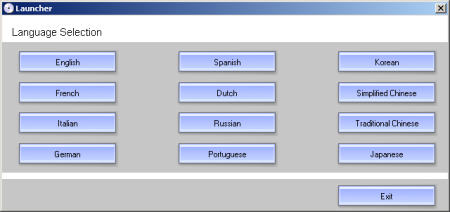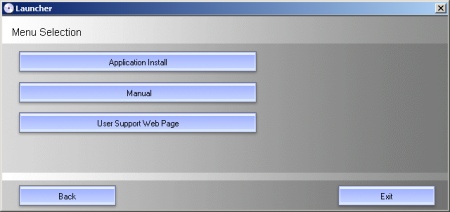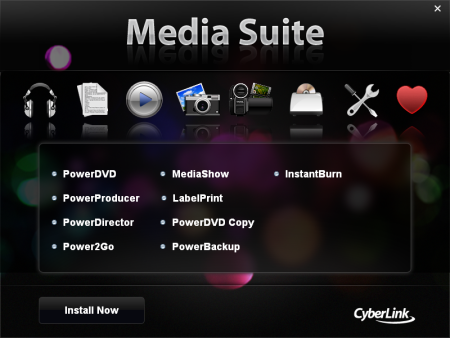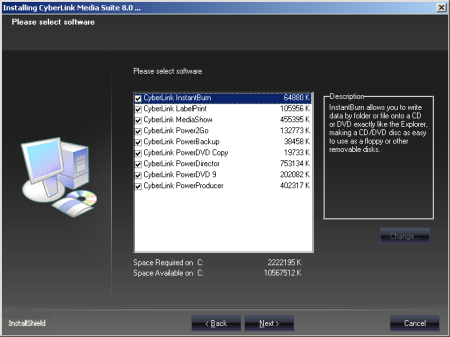Along with smaller cable size, one of the biggest benefits of Serial ATA is its ease of installation. Because it uses a point to point connection, setting jumpers has become a thing of the past. In most cases, installation is as simple as plugging in the SATA and power cables and turning the computer on. Needless to say, it took only a couple of minutes to install Sony's Blu-ray Disc writer in our test computer. After making sure that the BWU-500S was recognized by Windows, I was ready to start installing the software.
Software Installation:
As I mentioned earlier, the BWU-500S comes with a DVD full of software from CyberLink. If you have autorun enabled on your computer, the menu shown below will appear when you insert the disc. As you can see, the software and documentation is available in a number of different languages.

After selecting your preferred language, you'll be given a short list of options. From here you can choose to install the bundled software, check out the manual or visit Sony's user support web page.

Clicking the "Application Install" button will bring up another menu where you can read about the various applications included in the suite. Otherwise, you can start the setup process by clicking the "Install Now" button.

After selecting your preferred language and entering your customer information, you'll be presented with a number of installation options. From here, you can choose to install InstantBurn, LabelPrint, MediaShow, Power2Go, PowerBackup, PowerDVD Copy, PowerDirector, PowerDVD or PowerProducer. Simply select the components you want and click next a few times. Once the files are copied over, you can start burning your own discs.

Documentation:
The documentation that comes with the BWU-500S is a bit different than what we're used to seeing from Sony. Instead of spreading the information out between a number of small guides, Sony has crammed everything into a single set of "Operating Instructions." While a bit short on words, this fold out guide contains a variety of information including the BWU-500S's specifications, system requirements, package contents and bundled software. Sony also provides a number of diagrams showing the various buttons and connectors located on the front and back of the drive as well as how to install it into an empty drive bay and hook up the cables.
Like the other Sony drives we've reviewed, the BWU-500S was very easy to install. Even though Blu-ray is still a relatively new technology, there were no problems getting the drive or the software installed and working correctly. If you need help for some reason, the documentation provided by Sony should be more than sufficient. With this in mind, the BWU-500S scores a solid 9 out of 10 for the installation portion of this review.

